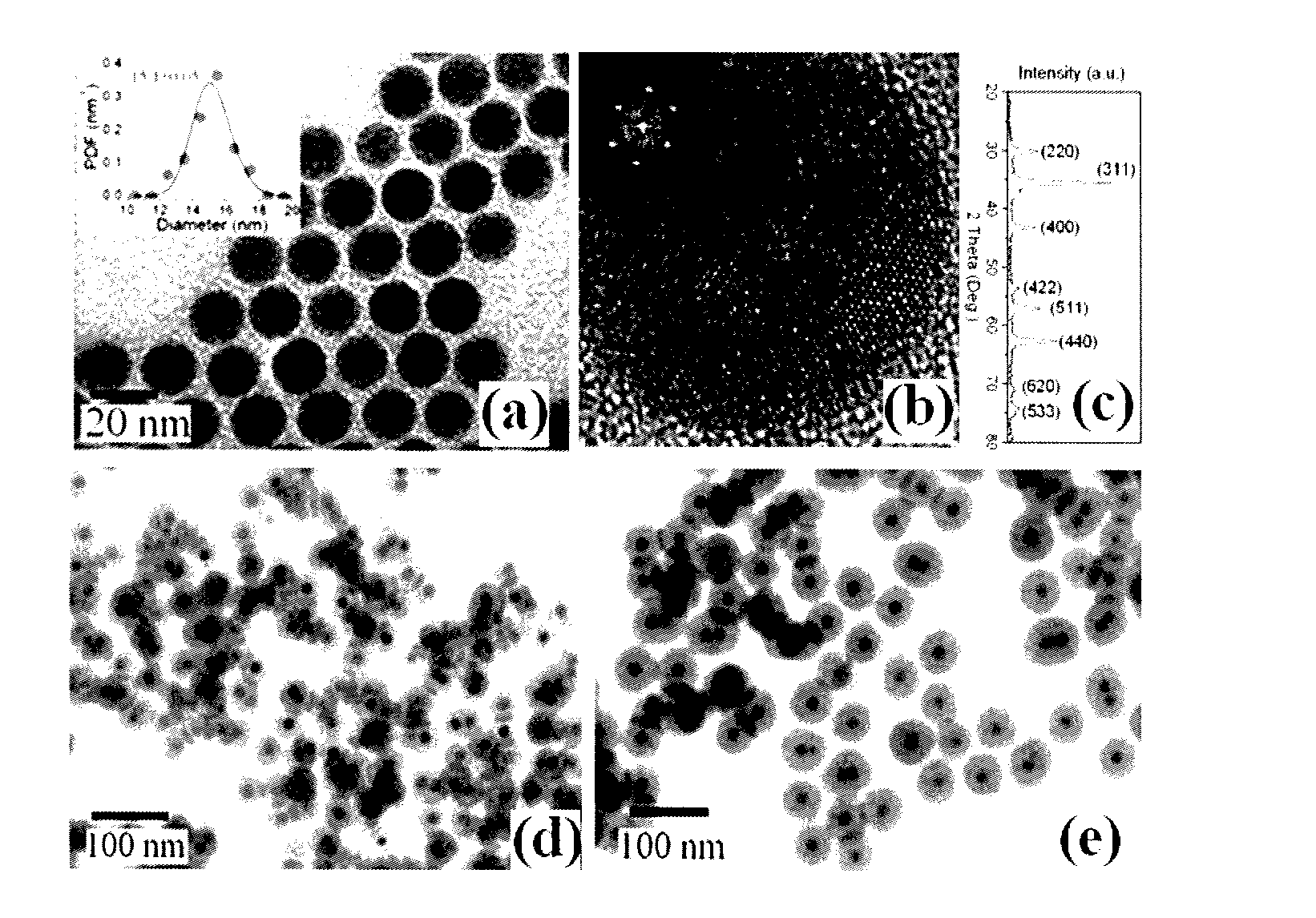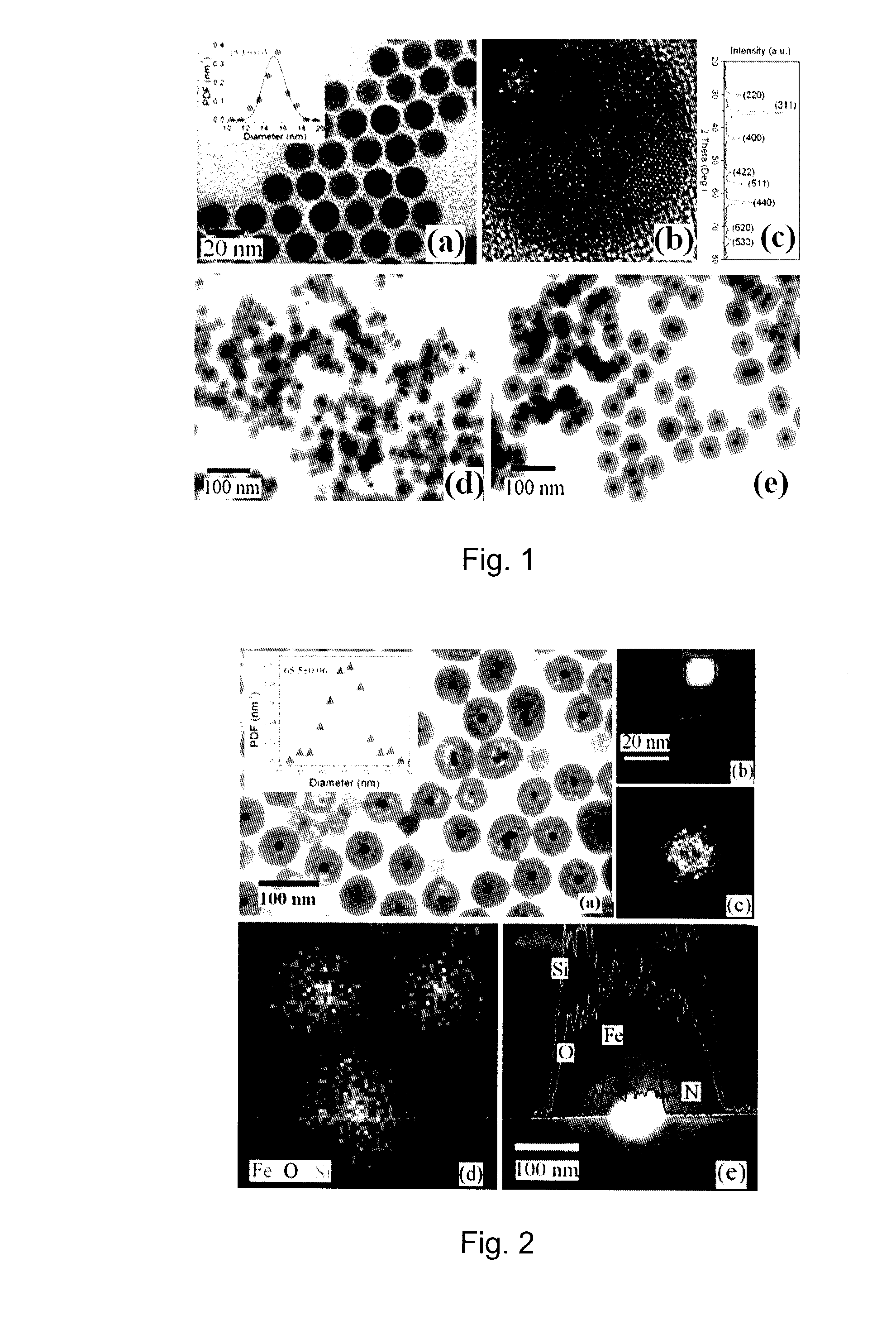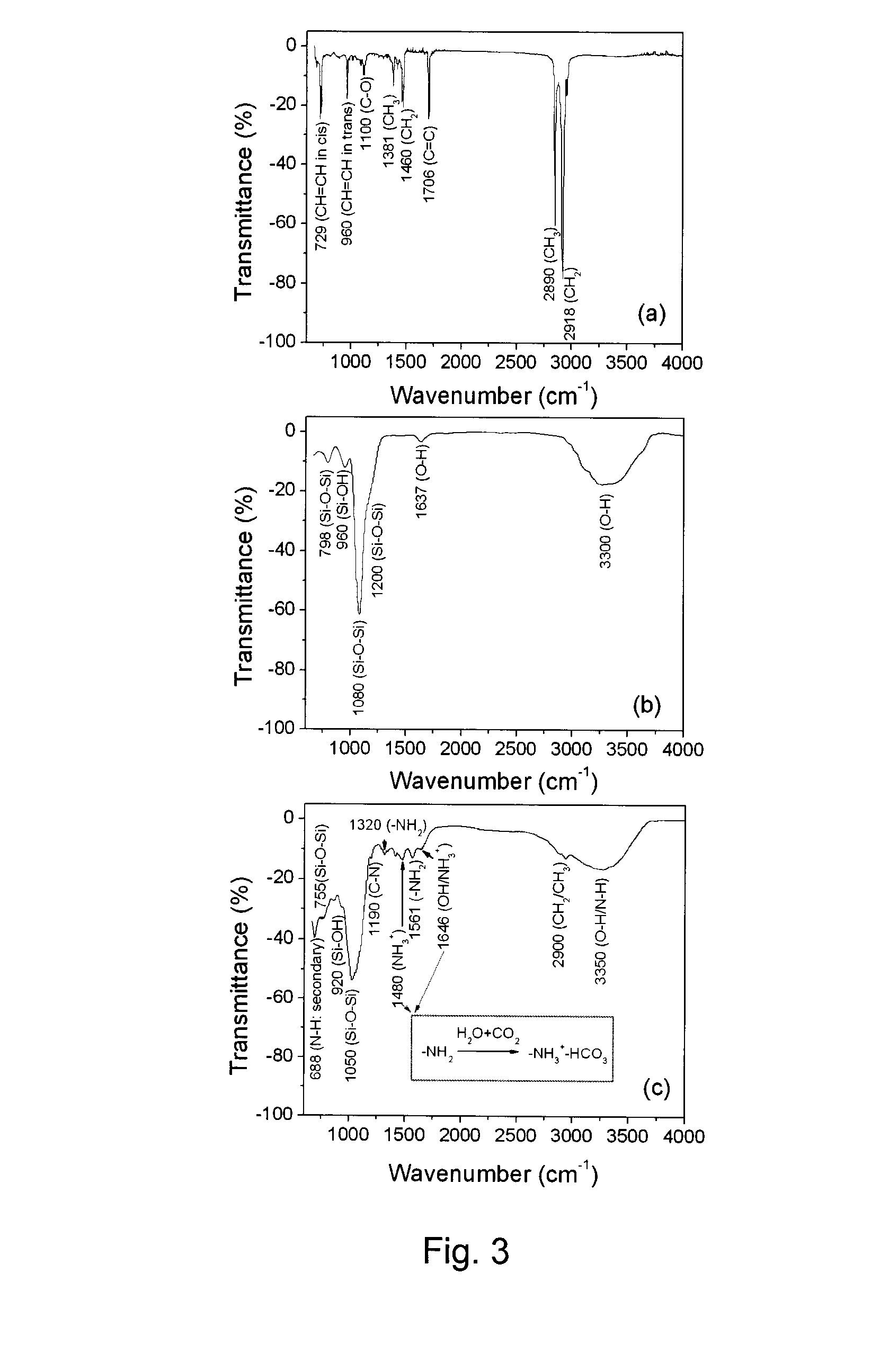Magnetic Nanoparticles and Uses Thereof
a technology of magnetic nanoparticles and nanoparticles, applied in the field of magnetic nanoparticles, can solve the problems of system lack of practical application in some cases, severely limit the amount of biomolecules that can be loaded on these nanoparticles, so as to improve the utility of magnetic nanoparticles and facilitate the design of molecule delivery
- Summary
- Abstract
- Description
- Claims
- Application Information
AI Technical Summary
Benefits of technology
Problems solved by technology
Method used
Image
Examples
examples 1-8
Solid Nanoporous Magnetic Nanoparticles Functionalized with Primary and Secondary Amines
[0054]In Examples 1-8 a co-condensation synthesis and subsequent characterization is described in connection with solid superparamagnetic core / shell Fe3O4 / silica(porous) nanoparticles containing both primary and secondary amine groups in the same nanoporous silica shell. Both the primary and secondary amine groups of the nanoporous shells not only can be used for optical labeling, either by direct conjugation with fluorescent molecules or by coupling with plasmonic Au nanoparticles, but can also be used for pH-regulated drug delivery. Fe3O4 / silica(porous) nanoparticles functionalized with 1,2-cyclohexanedicarboxylic anhydride as click linkers provide considerable ability to couple with doxorubicin molecules via amides. Moreover, the coupled doxorubicin molecules are relatively stable at neutral pH 7.4, but can be rapidly released in the range of pH 5.0 to 6.0 due to the hydrolysis of amide bonds ...
example 1
Synthesis of Fe3O4 nanoparticles
[0056]Oleic acid-coated Fe3O4 (Fe3O4 / OA) nanoparticles were synthesized based on a well-known process (Woo 2004). Under a nitrogen flow, a mixture of 20 ml octyl ether and 1.92 mL oleylamine was mixed at room temperature for about 10 minutes. This solution was subsequently heated to 100° C. in 20 min, remaining nearly colorless. At 100° C., 0.4 ml of iron pentacarbonyl were quickly injected into the solution under a fast argon flow, and the temperature was raised to 290° C., at a rate of 2° C. / min. The solution was refluxed at 290° C. for 2 hours and cooled down to room temperature by removing the heating source. During the reflux process, the solution experienced a color change from light yellow, to colorless to black. The resultant product of 15 nm Fe3O4 / OA nanoparticles was precipitated by adding excess anhydrous ethanol, and separated by centrifugation (9000 rpm). The product purified at least three times was dried under vacuum, and then kept in v...
example 2
Synthesis of Core / Shell Fe3O4 / Silica Nanoparticles
[0058]Non-porous core / shell Fe3O4 / silica nanoparticles were fabricated by hydrolyzing TEOS in a water-in-oil microemulsion that contains the Fe3O4 / OA nanoparticles from Example 1 as seeds. Briefly, Fe3O4 / OA nanoparticles were first dispersed in cyclohexane, at a concentration of 1 mg / mL, and then 0.5 ml of the Fe3O4-containing cyclohexane dispersion were rapidly injected into a mixture of 1.77 g of Triton™ X-100, 1.6 ml of anhydrous 1-hexanol and 7 ml of cyclohexane under a strong vortex for about 1 h. Subsequently, 0.5 mL of ammonia solution (28-30% ammonia solution to water in a 1:4 ratio by volume) were added in the above solution and shaken for another 1 h. Finally, 25 μl of TEOS were added, and the mixture was allowed to react for 24 h. To further increase the thickness of the silica shells, an additional 25 μl of TEOS were added and left for another 24 h under the same conditions. Two kinds of Fe3O4 / silica nanoparticles were pr...
PUM
 Login to View More
Login to View More Abstract
Description
Claims
Application Information
 Login to View More
Login to View More - R&D
- Intellectual Property
- Life Sciences
- Materials
- Tech Scout
- Unparalleled Data Quality
- Higher Quality Content
- 60% Fewer Hallucinations
Browse by: Latest US Patents, China's latest patents, Technical Efficacy Thesaurus, Application Domain, Technology Topic, Popular Technical Reports.
© 2025 PatSnap. All rights reserved.Legal|Privacy policy|Modern Slavery Act Transparency Statement|Sitemap|About US| Contact US: help@patsnap.com



